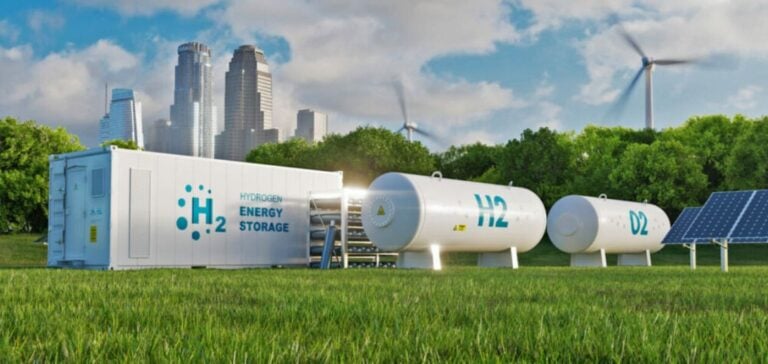Low-carbon hydrogen is becoming central to the United States’ strategy to reduce emissions in heavy industries and strategic sectors. Despite economic and regulatory challenges, hydrogen is emerging as an essential pillar in the energy mix.
Prices as a lever to accelerate adoption
On the Gulf Coast (USGC), hydrogen derived from steam methane reforming (SMR) is offered at less than $1/kg under long-term contracts. Recent assessments by Platts place the price of carbon-neutral hydrogen at $1.32/kg. These rates are attracting attention from industries such as refineries and ammonia producers, who are considering integrating this gas to reduce their carbon footprint.
However, the decision to opt for captured (blue) or renewable (green) hydrogen remains complex. An American ammonia producer is currently evaluating the option of investing in its own production plant to benefit from the tax credits provided under Section 45V of the Inflation Reduction Act.
Politics at the heart of the challenges
The political framework plays a crucial role in hydrogen adoption in the United States. While the Department of Energy (DOE) is multiplying initiatives to support supply and demand, the incentives remain insufficient compared to stricter European policies. The absence of mandatory requirements for low-carbon fuels limits the pressure on companies to adopt these solutions.
In the context of global climate policies, the United States strives to position hydrogen as a competitive alternative, particularly in industries where the European Union’s carbon penalties directly influence exports.
Strategic sectors in transition
Ammonia producers in the Gulf Coast region are particularly interested in blue and green hydrogen to reduce their greenhouse gas emissions. However, cost remains a major constraint to attracting buyers still reluctant to pay a premium for low-carbon products.
In the mobility sector, hydrogen technologies are now focusing on heavy transport, such as trucking and rail. According to Commodity Insights, these segments offer significant advantages over electric vehicles in the context of the energy transition.
Prospects for hydrogen
The future of hydrogen will depend on companies’ ability to integrate this solution while absorbing initial costs. Growing demand in sectors difficult to electrify, coupled with a strengthened regulatory framework, could accelerate its adoption. However, hydrogen’s competitiveness remains tied to stable tax incentives and cost reductions through technological innovation.






















